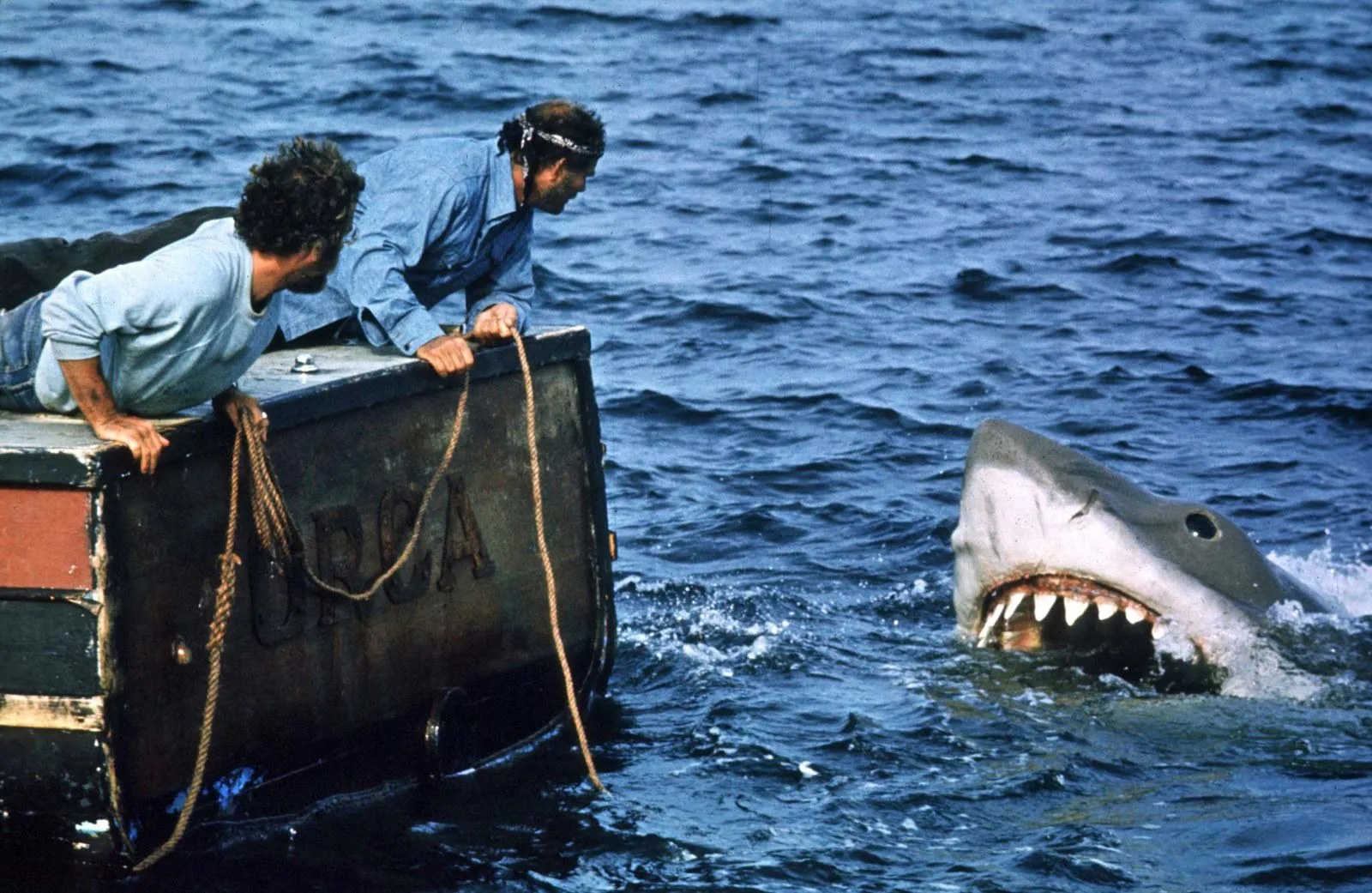“Jaws” (1975)

Directed by Steven Spielberg and released in 1975, “Jaws” is a landmark film in the history of cinema, credited with creating the genre of the summer blockbuster and forever changing audience expectations of suspense and horror. Based on Peter Benchley’s novel of the same name, the movie follows the hunt for a gigantic great white shark terrorizing a small beach town, Amity Island.

From its iconic opening scene, where a young woman is viciously attacked while swimming in the ocean, “Jaws” grips viewers with a sense of primal fear and suspense that escalates throughout the film. Spielberg’s masterful direction and John Williams’ haunting score combine to create an atmosphere of impending doom, where the unseen menace lurking beneath the waves becomes a metaphor for the unknown dangers of the natural world.

At its core, “Jaws” is a character-driven narrative that explores the psychological and emotional toll of fear. Police Chief Martin Brody, played by Roy Scheider, faces the dilemma of protecting his community while grappling with his own fear of the water. The dynamic between Brody, the seasoned shark hunter Quint (Robert Shaw), and marine biologist Matt Hooper (Richard Dreyfuss) forms the heart of the film, showcasing their contrasting approaches to confronting the shark and their evolving camaraderie under duress.

The success of “Jaws” lies not only in its visceral thrills but also in its thematic depth. Spielberg uses the shark as a metaphor for various societal fears, ranging from the unpredictability of nature to the consequences of greed and political corruption. The film’s exploration of human vulnerability in the face of an unstoppable predator resonates on both personal and collective levels, making it a timeless exploration of primal instincts and the fragility of civilization.
Technically, “Jaws” is a marvel of filmmaking innovation. Spielberg’s use of suspense-building techniques, such as the unseen threat and the gradual revelation of the shark, set a new standard for horror and thriller genres. The mechanical failures of the animatronic shark, nicknamed Bruce, forced Spielberg to rely on suggestion and implication, resulting in a heightened sense of terror through minimalistic yet effective visual storytelling.

Moreover, “Jaws” had a profound impact on popular culture and the film industry. Its unprecedented success at the box office transformed the way studios approached film distribution and marketing, leading to the rise of the blockbuster era. The movie’s iconic poster and tagline, “You’ll never go in the water again,” became synonymous with the fear and anticipation it instilled in audiences worldwide.
In conclusion, “Jaws” remains a timeless classic that continues to captivate and terrify audiences decades after its release. Steven Spielberg’s meticulous craftsmanship, coupled with outstanding performances and a gripping narrative, solidifies its status as a cinematic masterpiece. Beyond its surface thrills, “Jaws” offers a profound exploration of fear, resilience, and the enduring power of human spirit in the face of adversity. As Chief Brody famously declares, “We’re gonna need a bigger boat,” the film reminds us of our capacity to confront and overcome our deepest fears, making it an enduring symbol of cinematic excellence.











